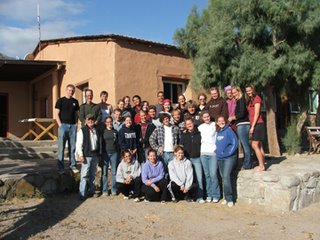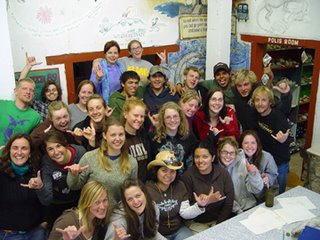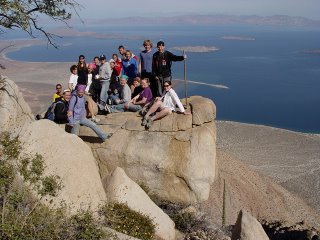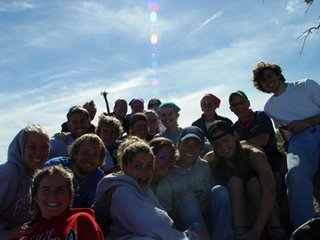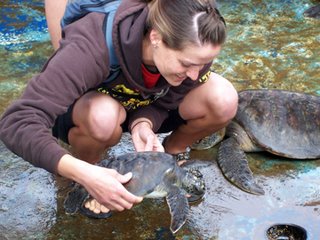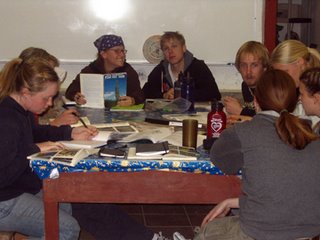
One of the recurring themes of the Baja experience is "seeing"—seeing things from new perspectives and seeing the same things from completely different perspectives, disciplinary and otherwise, all oriented around how it takes multiple perspectives to get a better view of the world, and worlds, we live in. Thus, we view the same things and have the same experiences, but have somewhat different understandings of them, depending on a large number of variables, the most basic of which for us in Baja is that we have two biologists, a sociologist and an artist running three separate classes, while at the same time combining them into one experience.
The unifying factor is that we agree to have this conversation—and it is a conversation, one that goes on for three weeks, and into which we invite our students. At this point in the class, we are starting to see the fruits of this effort. Art students and biology students are asking sociological questions; biology students and sociology students are understanding the nuances of perspective in art making; sociology students and art students are appreciative of, and yes, learning, different plant names, identifying birds, and seeing how natural ecological systems are also related to global economic systems.
In her wonderful book, Pilgrim at Tinker Creek, a reflection on nature and theology, Annie Dillard points out that as humans we just can’t see the world as it really is—our brains naturally edit the types of information we can receive and thus with which we can interact. She notes that it is only the simplest, one-celled animals that experience the world in an unedited way—thus seeing the world as it really is. As a sociologist, I include in this “editing” process such things as culture, gender, race, social class, religion, etc., through which we experience reality differently depending on where we are located in these different classifications.
So where does that leave us? Is this some sort of nefarious postmodern perspective as some would have it, or is it an honest approach to understanding a complex and multifaceted world? I suppose the answer to that lies in the way that we have organized this whole Baja experience—valuing multiple perspectives as a way to get an understanding of life in the fullest sense, physically (biology), aesthetically (art), socially (sociology), all embedded within the spiritual realities that we seek and claim. In this understanding, the spiritual dimension of life is enhanced when we come to at least a partial understanding of these other areas. For us then, one of the challenges of the Baja experience is to give our students the opportunity to attempt to overcome their perceptive limitations, and hopefully see a broader range of the reality within which they live.
